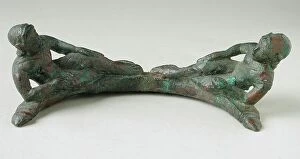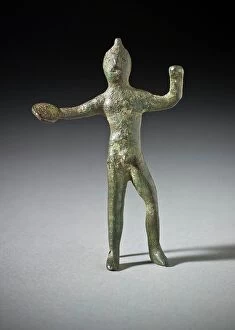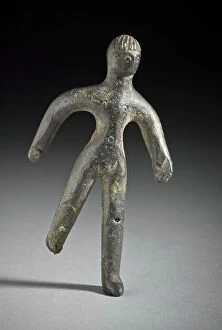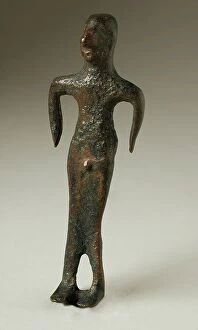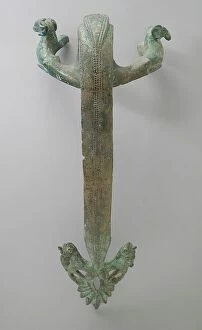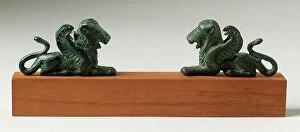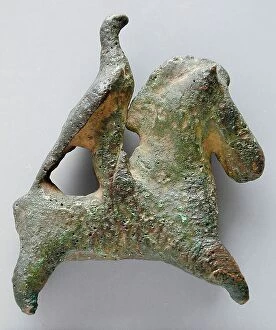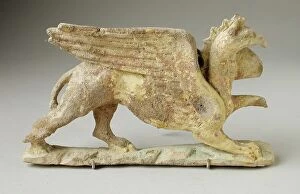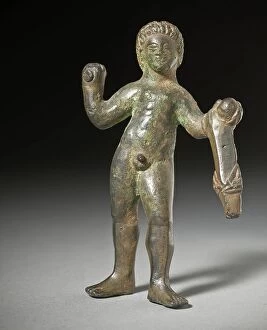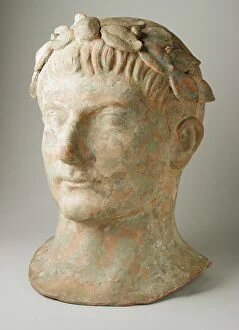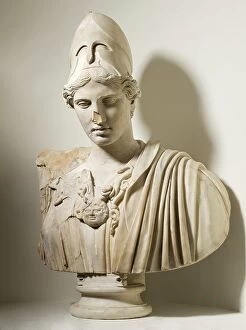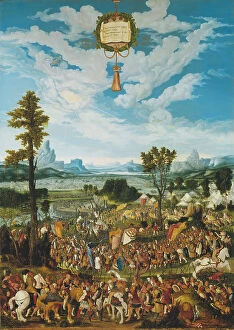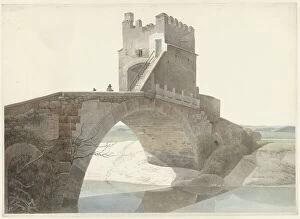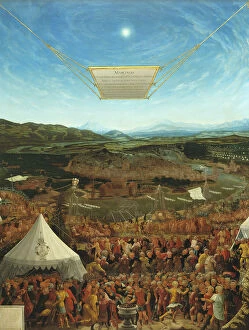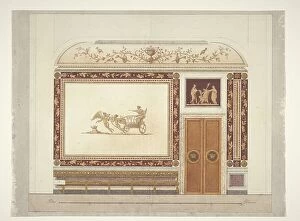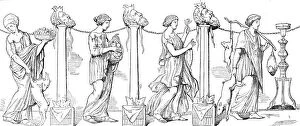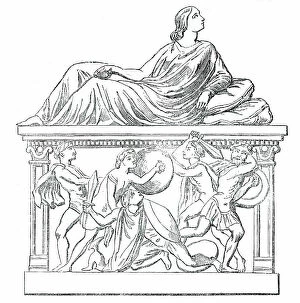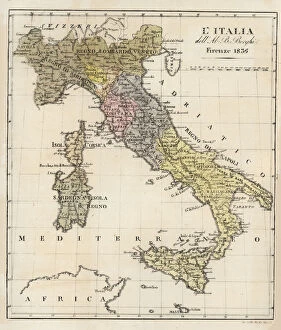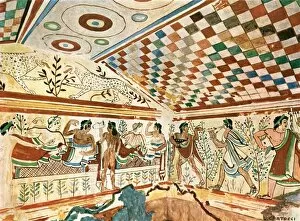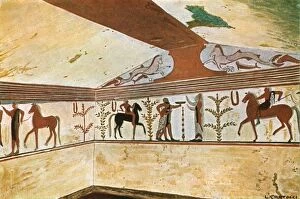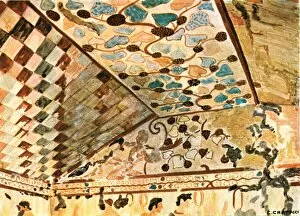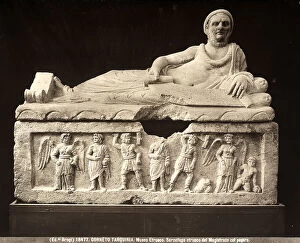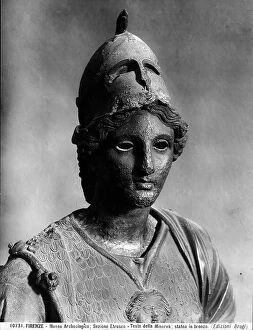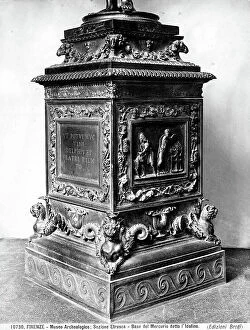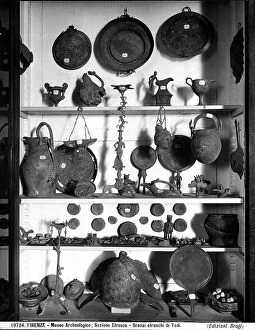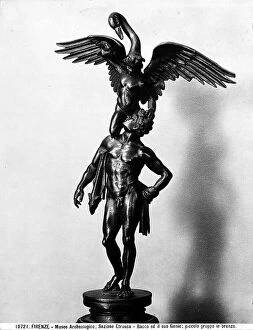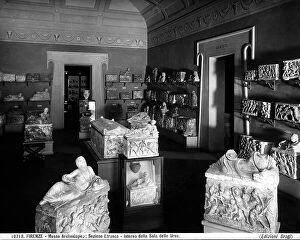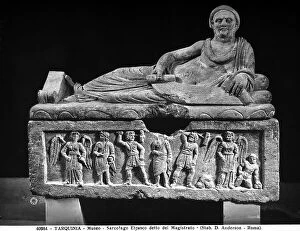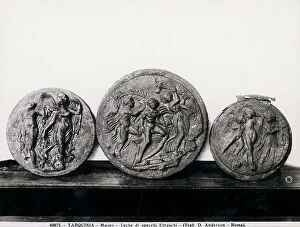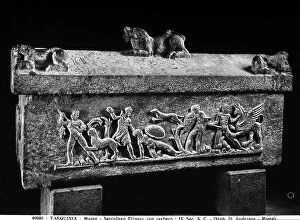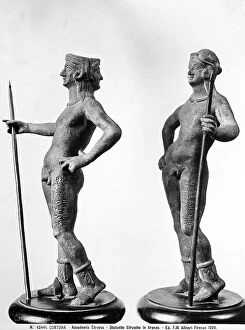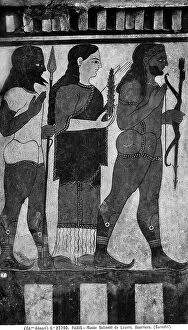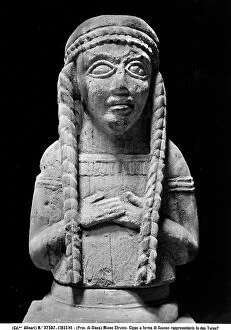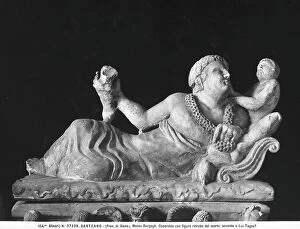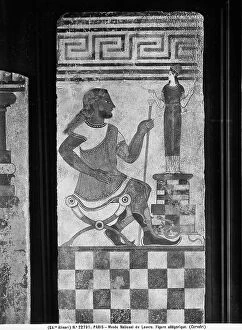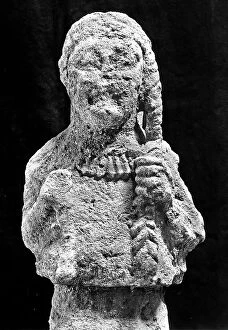Etruscan Collection (#2)
Discover the enigmatic world of the Etruscans through their captivating art and archaeological treasures
For sale as Licensed Images
Choose your image, Select your licence and Download the media
Discover the enigmatic world of the Etruscans through their captivating art and archaeological treasures. Marvel at the intricate details of the Portland vase, a masterpiece housed in the British Museum, depicting mythical scenes that transport you to ancient times. Immerse yourself in their mythology as Hercules brings Cerberus to Eurystheus, accompanied by Hermes and Athena, showcasing their exceptional craftsmanship from the 6th century BC. Delve into the realm of love and death with the painted terracotta Sarcophagus of the Spouses from Cerveteri, Rome province. This exquisite piece from 520 B. C captures an eternal bond between two souls united even beyond life's boundaries. Witness another stunning sarcophagus from Cerveteri dating back to 520 BC; its intricate carvings depict a married couple forever entwined in eternity. Step inside history itself by exploring Tarquinia's Tomb of Augurs adorned with mesmerizing wall paintings that narrate tales lost in time but preserved for us today. Encounter an Etruscan warrior sculpture crafted during the 4th century BC; its powerful presence reflects both strength and elegance intrinsic to Etruscan artistry. Experience beauty in motion through an enchanting dancer depicted on Tricliniums Tomb walls - a testament to their appreciation for music and dance as integral parts of life celebrations. Journey to Civita di Bagnoregio in Viterbo province where remnants of this ancient civilization still stand proudly amidst breathtaking landscapes. Uncover more secrets within chamber tombs like Pruni f's cinerary urn on podium - a hauntingly beautiful artifact symbolizing reverence towards departed loved ones. Transport yourself back further with steel engravings published in 1861 capturing Ancient Italy circa 450 BC, offering glimpses into daily life during that era. Explore one of Italy's great Etruscan towns where echoes of this fascinating culture can still be heard, reminding us of their significant contributions to history.

